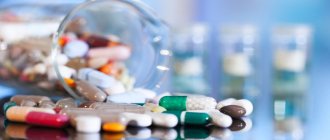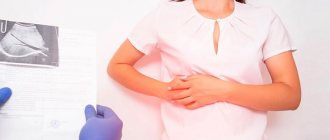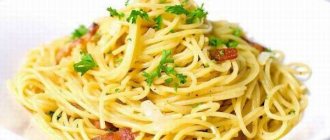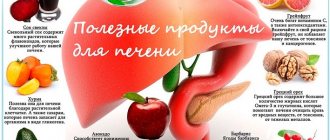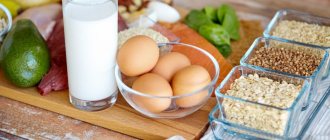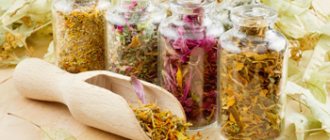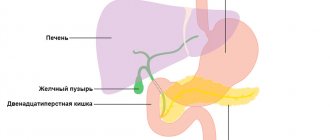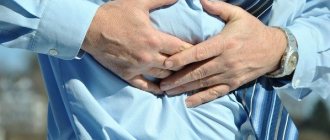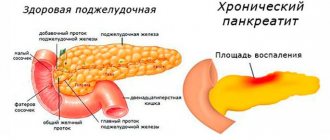People suffering from liver or gallbladder diseases know that their well-being directly depends on what they eat. Therefore, for such patients, nutritionists, together with specialized specialists, have created a special diet that allows them to maintain well-being at a normal level, and also helps the stomach to better absorb food. What should be the diet for liver and gallbladder disease?
Diseases of the liver and gall bladder, basic principles of nutrition
You will have to give up alcohol!
The liver is one of those organs in the human body that endures enormous loads every day. And in order for it to work as it should, it is necessary to “pity” it, that is, to lead the right lifestyle. Unfortunately, 90 percent of the world's inhabitants begin to monitor their diet only when problems have already begun to manifest themselves. This is especially true for the liver. There are several basic principles of nutrition if a person has one or another liver disease:
- In total, up to 2,500 calories should be consumed per day, especially if a person suffers from hepatitis
- You need to eat several times a day and in small portions. This is approximately four to six times a day, depending on your daily routine and opportunity. But 4 is the minimum number of techniques
- You can only eat boiled and steamed foods, because they do not put much strain on the gastrointestinal tract
- It is necessary to completely avoid fried foods. Such prepared dishes are quite heavy, and a diseased liver simply cannot cope with them
- You should only eat warm foods. Under no circumstances should you eat cold or hot, as such changes negatively affect the mucous membranes.
- You need to eat more foods containing fiber, as it stimulates the excretion of bile in the body
As for the gall bladder, the principles of nutrition are the same, because these two organs are closely interconnected, and what is good for the liver will be good for the gall bladder.
Recipes, menu
First meal
The most suitable menus for cholelithiasis are puree soups, vegetable soups and borscht with well-boiled vegetables. Do not add hot seasonings or over-salt.
Tomato puree soup
- You need: 5 peeled tomatoes, 3-4 bell peppers (depending on size), 1 medium onion, salt to taste.
- Cut the onions into rings, tomatoes into slices. Remove seeds from bell peppers and chop. Collect all vegetables in a saucepan and add salt to taste. Simmer vegetables for 15 minutes in their own juice. If there is not enough juice from the tomato, add half a cup of broth (tomato juice, water).
- When the vegetables are soft, drain the liquid and cool slightly, grind the vegetables in a blender. Dilute with broth to desired density. Sprinkle with chopped herbs - dill, parsley.
- The soup can be served with low-fat sour cream and breadcrumbs.
Zucchini soup
- You need: 1 zucchini (medium or large), 2-3 potatoes (optional), 1 carrot, 1 small onion, salt to taste.
- Chop onions and carrots. Peel the potatoes and zucchini and cut into cubes.
- Place onions and carrots, potatoes and zucchini in a saucepan. Add 3 cups of broth (vegetable or meat) or water. Cook vegetables for about 20 minutes, add salt to taste.
- Leave a little broth in the vegetables and drain the rest. Cool slightly and puree in a blender. Dilute the remaining broth if necessary to the desired density. You can add sour cream to taste.
- Serve the soup with herbs, croutons or a boiled egg (without the yolk).
Steam dishes
Steamed food is easily digestible and quickly digested, so it is a must for cholelithiasis. Steamed dishes can be prepared not only for lunch, but also for breakfast or dinner.
Lenten fish pilaf
- You need: 0.5 bowls of pearl barley, 1 medium carrot, 200 g boneless and skinless fish fillet, fish seasoning, dill, parsley, salt to taste.
- Soak pearl barley in boiling water for 30 minutes.
- Finely chop the carrots and fillet.
- Combine pearl barley, carrots and seasoning, place in a double boiler for 20 minutes, then add fish and stir. Cook for another 25 minutes.
Steamed stuffed zucchini
- You need: 1 zucchini, minced lean meat, 2-3 onions, salt to taste.
- The zucchini is peeled, cut in half, and then the insides are removed from each part.
- Minced meat mixed with onions is placed in each half. Cook in a double boiler until the zucchini softens.
Vegetable dishes
Vegetables in any form, fresh, steamed, boiled or stewed, are suitable for eating for cholelithiasis.
Spaghetti squash
- Needed: 2 medium zucchini.
- For the sauce: 4-5 medium tomatoes, 2 tbsp. tablespoons sunflower oil, salt to taste
- Peel the zucchini and cut into thin long strips.
- Mix all sauce ingredients in a blender until smooth.
- Pour sauce over spaghetti.
Baked pumpkin
- Wash the pumpkin and, without cutting the skin, wrap it in foil and bake in the oven until soft.
- Once ready, cut lengthwise, remove seeds and fibers, mix the pulp with low-fat cottage cheese, seasoned to taste.
Proteins, fats and carbohydrates
Daily protein requirement - from 80 to 90 grams
Particular attention should be paid to the amount of proteins, fats and carbohydrates in the daily diet, because not only the condition of the liver, but also the entire body depends on this, since cells and other organs must receive a normal amount of nutrients and vitamins. So, for diseases of the liver and gall bladder, the daily protein content should be from 80 to 90 grams. If there are much fewer proteins, this will lead to liver dystrophy and, as a consequence, the development of cirrhosis. It is best to eat foods that contain easily digestible proteins. For example, cottage cheese.
As for fats, they should not be more than 80 - 90 grams. A deficiency can lead to negative consequences, and an excess will increase the load on the organs. It is believed that in fact fats do not pose a particular danger to the liver, but if a person consumes them in large quantities, this leads to the deposition of cholesterol plaques, as well as excess weight, which is always harmful. Most of the daily portion of fat should be animal fats, which are better absorbed, and only one third should be vegetable fats. Fat improves the absorption of vitamins and nutrients, which is very important for a diseased liver. That is why patients are advised to add either butter or sunflower oil to their porridge.
Separately, it is necessary to say about carbohydrates. Under no circumstances should their quantity be reduced. The main thing is not to eat a lot of foods containing easily digestible carbohydrates. These include sugar and honey. It is best to allocate about 100 grams per day for them. The remaining 300-350 grams should be simple carbohydrates. Particular attention is paid to their quality, not quantity. True, this does not mean that you need to lean on foods that contain a lot of carbohydrates. Everything should be in moderation, because excessive consumption can lead to the deposition of fats in the liver, which is very bad, as well as stagnation of bile.
Diet number 5
Diet as part of the treatment of gallbladder diseases
Diet plays an important role for people suffering from liver and gallbladder diseases. Compliance with it guarantees normal well-being. Often, with some deviations from it, an exacerbation immediately develops, and the person has to go on a strict diet. Today, people suffering from these diseases are recommended to adhere to diet number five, which was developed specifically taking into account the physiological characteristics of the liver and gall bladder. She has several options, each of which is different from the previous one.
Diet 5a is prescribed in the acute period of Botkin's disease, in the case of chronic liver diseases (for example, hepatitis), during exacerbation of cholecystitis, as well as in inflammatory processes in other organs, such as the stomach and intestines. The peculiarity of this diet is that the patient limits the consumption of fats, especially refractory fats, and cholesterol. In addition, special attention is paid to nitrogenous substances, essential oils and purines. Their content should be reduced as much as possible. As for carbohydrates and proteins, they remain unchanged.
Potassium-magnesium diet for diseases of the cardiovascular system
There are a great many diseases of the cardiovascular system and all of them are very difficult for the body to tolerate. Eating according to the principles of a magnesium diet with the addition of potassium can significantly alleviate the symptoms of these diseases and even correct their course towards improvement. The nutritional pattern of the potassium-magnesium diet is as follows:
- in the morning you need to eat oatmeal with dried fruits and wash it all down with a cup of tea;
- second breakfast will consist of 2 baked potatoes with a glass of dried fruit broth;
- for lunch on a potassium-magnesium diet, eat stewed pumpkin, boiled chicken breast and low-fat vegetable soup;
- You can have a snack before dinner with a couple of baked apples;
- For dinner you need to cook and eat stewed vegetables.
Allowed foods and dishes
Table No. 5 - tasty and healthy
You can highlight certain foods and dishes that are allowed to be eaten with any version of diet number 5. In fact, their list is quite impressive, so we can say that, despite some limitations, a person can eat practically as before, only reduce portions and eliminate fried foods. Permitted products include:
- Dairy products, namely milk, both plain and dry, cream, sour cream (it is best to eat fresh and in moderation), kefir. In addition, curd products play a particularly important role. You need to choose them carefully and give preference to low-fat cottage cheese
- Soups are made with vegetable broths, and you can add a little vegetable oil, but under no circumstances overcook them. You are also allowed to eat borscht with beets and cabbage soup. True, also in vegetable broth
- Fruit and milk soups
- Meat and fish, especially lean varieties. This includes beef, poultry, and certain types of fish. It is best to steam, boil or bake, as the beneficial properties are preserved and the dishes do not become harmful.
- Oil in moderation. So, it is allowed to consume a small amount of vegetable oil, butter and olive
- Egg yolks. It’s better to limit yourself to one a day, and not in its usual form, but added to dishes or baked goods.
- Porridge. It is best to make the porridge either crumbly or semi-viscous. Give preference to oatmeal and buckwheat. You can cook porridge with milk; some people even add cottage cheese to it for variety.
- Pasta that can be eaten either boiled or baked
- Vegetables, especially boiled and baked
- Mild cheese, low-fat ham
- Fruits and berries. True, you need to exclude sour
- Black, green tea, rosehip infusions, fruit juices
In fact, only from the outside it may seem that diet 5 (and all its types) is quite tough. Patients are allowed to eat almost anything, the main thing is to observe the calorie content.
What is prohibited in case of inflammation of the gallbladder with a stone?
In case of biliary disease (GBD), it is unacceptable to eat food that has the ability to increase bile secretion. Mostly high-cholesterol foods, as well as foods containing large amounts of refractory fats, have this characteristic.
The following cannot be eaten from prepared store-bought foods:
- Pastry flour products, fresh baked goods;
- Milk with a high percentage of fat and products containing it, including fermented milk;
- Egg yolks, especially more than one per day;
- Fish and meat liquids (broths);
- Mushrooms (even if they are used and then removed from the prepared dish);
- Barley, millet and pearl barley.
- Tomatoes (especially in the form of pickles and marinades).
- Canned food, sausage products, smoked meats and offal;
- Various spices, in particular ginger (can cause displacement of gallstones and cause complications of cholelithiasis);
- Cheese with various additives, especially hard types;
- Just like healthy people, it is prohibited to consume fast food products, as well as semi-finished products;
- Highly concentrated teas and natural coffees.
Prohibited foods for liver and gallbladder diseases
Cholecystitis most often occurs due to poor nutrition
There is a list of foods that are strictly forbidden to eat if a person suffers from a particular liver or gallbladder disease. Such products include:
- Fatty fish and meat, because they sharply increase the load on the already weak liver and gall bladder
- Fried foods, since their calorie content increases several times, and the vegetable oil in which the dishes are prepared completely loses its beneficial properties and, on the contrary, becomes harmful
- Salo
- Fatty broths. Some people like the broth to be very fatty, but it is precisely such broths that are harmful not only to a diseased liver, but also to a healthy one.
- Any smoked meats, especially salami, cervelata
- Canned food
- By-products
- Legumes, since they are quite heavy and difficult for the stomach to digest
- Mushrooms
- Pickled products
- Buns, cakes
- Coffee
It is strictly forbidden for people with a diseased liver to drink alcoholic beverages, as they destroy it even more and cause intoxication of the body.
Diet therapy for acute cholecystitis
Acute cholecystitis and exacerbation of chronic inflammation of the gallbladder require a special approach to the composition of the diet.
- In the first 1–3 days, in case of severe exacerbation with severe pain and severe nausea, the doctor may prescribe therapeutic fasting, which will complement intensive drug therapy. It is recommended to drink enough fluids to prevent significant dehydration. If this is not possible, the patient is given infusion therapy (intravenous solutions). But with an exacerbation of calculous cholecystitis, a starvation diet can provoke even greater stagnation of bile with the addition of pancreatitis, so the decision to refuse to eat any food should be made only by a doctor.
- Subsequently, a so-called “liquid diet” is recommended for several days, when the patient receives only liquid and semi-liquid meals. At first, only diluted compotes, jelly, and herbal decoctions are taken. Then gradually introduce semi-liquid vegetable puree soups, slimy liquid pureed porridges in water (rice, oatmeal, semolina are preferred). On days 4-5, weak broths and low-fat fermented milk products are allowed.
- As the signs of acute inflammation subside, the diet is gradually expanded, introducing steamed and boiled products from the permitted list.
After the exacerbation has stopped, the patient is transferred to table No. 5 according to Pevzner, during this period his diet already corresponds to the diet for chronic cholecystitis.
